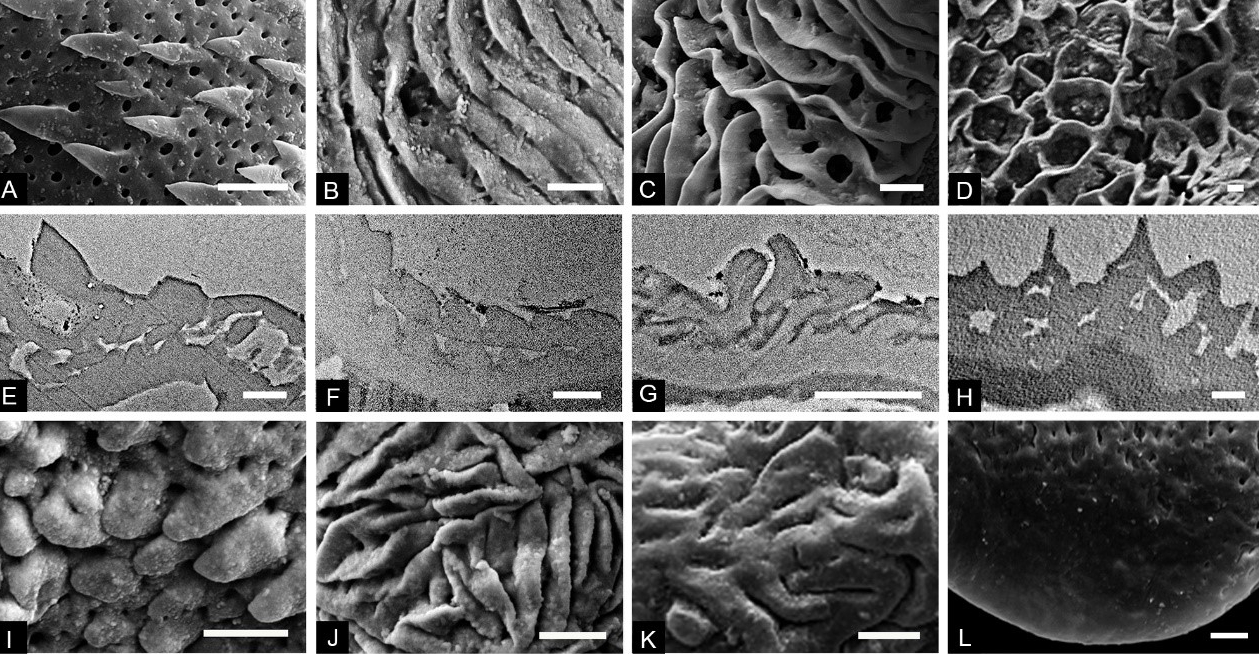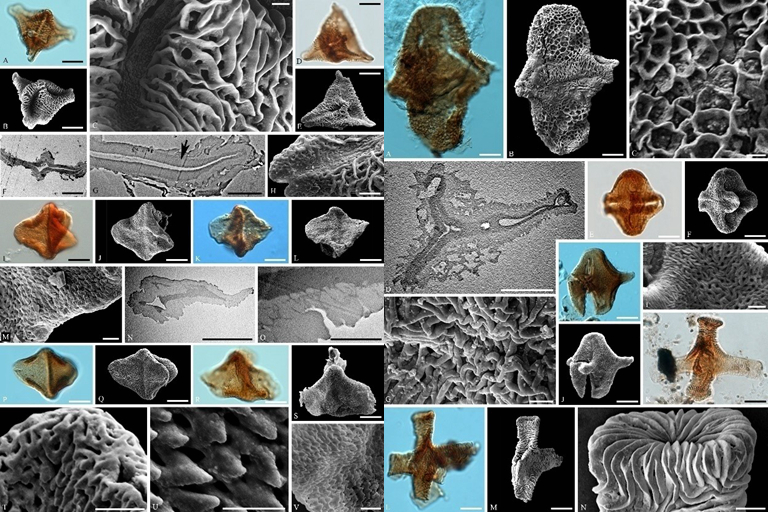Triprojectacites is an extinct fossil pollen group characterized by three projections at the equator, which mainly thrived during the Late Cretaceous. The Northern Hemisphere palynofloras during the Late Cretaceous can be divided into a Normapolles province and an Aquilapollenites province, the latter of which is represented by the existence of Triprojectacites. Northeast China constitutes an important part of the Aquilapollenites Provincein yielding abundant fossils of this special pollen group. This pollen group is of great significance in the study of stratigraphic division and correlation of the Upper Cretaceous, palaeoecology and palaeoclimate during that timefor its unique morphology, high diversity, short distribution, and rapid evolution.
However, due to the complexity in morphology, it is hard to be correctly observed, described and measured, resultingin a mess of its systematic classification and identification, which then has seriously hindered its scientific applications.
Recently, WU, Yixiao, a Ph.D. candidate in Nanjing Institute of Geology and Palaeontology, Chinese Academy of Sciences (NIGPAS), with her supervisor, Prof. LI, Jianguo, and others, carried out a detailed research on the morphology, systematics, geological distribution, and evolution of Triprojectacites based on the material froma scientific drilling well, SK-1, in the Songliao Basin. A series of results has been approached and published in international journals Grana and Cretaceous Research.
The SK-1 well in the Songliao Basin is ideal for the study of Triprojectacites for its highly detailed research, particularly the high-precision chronological framework. A total of 101 samples have been checked from the well to observe pollen morphology under optical, scanning electron, and transmission electron microscopes using single-grain technology. The morphological features of Triprojectacites have been clarified, including its shape, polarity, aperture, ornamentation and wall structure. A standardized morphological terminology and measuring method have been proposed. Finally, eight genera were screened out from the thirty-nine genera that have been proposed in relation with Triprojectacites.
A classification system at generic level of Triprojectacitesis established. The composition and distribution of generaand species of Triprojectacites was investigated through the SK-1 well, exhibiting a five-phase evolution of Triprojectacites in the Songliao Basin as occurrence, radiation, steady development, climax, and extinction. During its evolution, Triprojectacites tend to be larger in size, more robust and complicated in ornamentation, and bearingaccessory structures.
These research advances have laid a solid foundation for the research andapplication of Triprojectacites in species classification and evolution, and will promote its use in the study of global division and correlationof terrestrial Cretaceous strata, palaeoecology, and palaeogeography as well.
These studies were jointly supported by the Strategic Priority Research Program of the Chinese Academy of Sciences and the National Natural Science Foundation of China.
Rereference:
Wu, Y., Li, J., 2022. Genus classification of Triprojectacites Mtchedlishvili, 1961 emend. Stanley 1970. Grana, 61(3): 161–181. https://doi.org/10.1080/00173134.2022.2050804.
Wu, Y., Li, J., Lin, M., & Koppelhus, E., 2022. Triprojectacites in the Songliao Basin, Northeast China: Systematics, biostratigraphy and evolution. Cretaceous Research, 135: 105193. https://doi.org/10.1016/j.cretres.2022.105193.

Figure 1 SEM, TEM images of major ornamentationtypes in Triprojectacites

Figure 2 Genera and species diversity of Triprojectacites in the Songliao Basin

Figure 3 Evolution of each genera and species of Triprojectacites in the Songliao Basin
Contact:
LIU Yun, Propagandist
Email: yunliu@nigpas.ac.cn
Nanjing Institute of Geology and Palaeontology, Chinese Academy of Sciences
Nanjing, Jiangsu 210008, China
